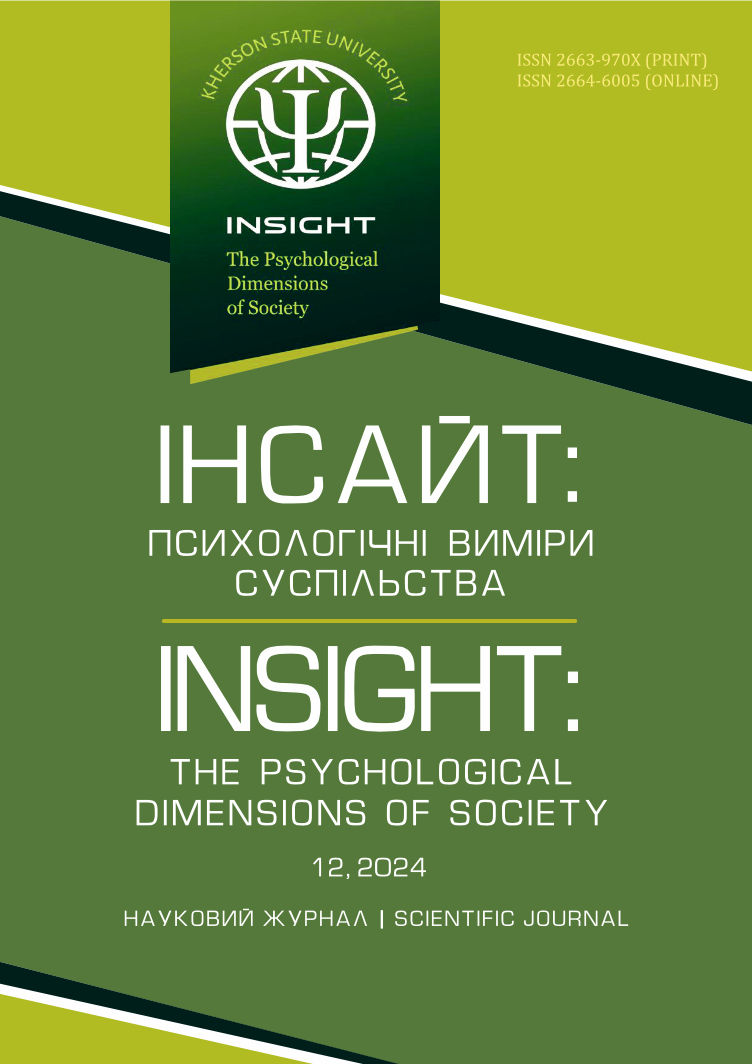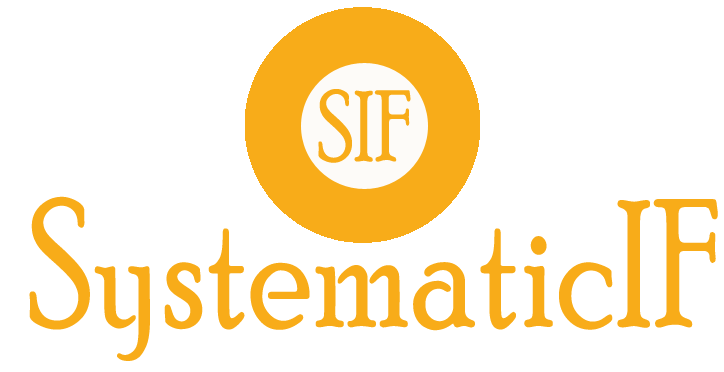Student Leadership in Times of Social Transformation
Abstract
The aim was a theoretical-empirical study of the phenomenon of student leadership in the context of educational and professional activities during times of social transformation. The respondents were student leaders from the first to the fourth years of study at higher education institutions in Ukraine, with a total of n = 43 individuals. The age range of the sample population was between 18 and 25 years. The sample characteristics: M = 20.34; SD = ±4.28; Me = 20.50; Mo = 20.00. Methods. A relevant psychodiagnostic toolkit was selected in accordance with the developed methodology and research strategy. The following instruments were used: “Sociometry” (Moreno, 1951); “Life Orientation Test” (LOT) (Carver & Gaines, 1987); “Self-Efficacy Scale” (SES) (Sherer et al., 1982); and “Tolerance for Uncertainty Scale” (TUS) (Mclain, 1993). Results and discussion. The relationship between the self-efficacy parameters of the respondents and their life orientations and tolerance for uncertainty was identified (p < .050; p < .010). It is noted that student leaders who had high self-efficacy in subject activities enjoyed high credibility, but were silent and restrained in communicating with peers. Student leaders who had high self-efficacy in interpersonal communication had average achievements in their educational and professional activities, were respected and had no less influence on their peers. A comparison of the studied groups with low and high levels of self-efficacy showed that Group 2 (a high level of self-efficacy in subject activities) had superiority in attitude to complex tasks (ACT) and tolerance for uncertainty (TU). It is explained that the willingness to demonstrate a clear position in the changing realities of today was a prerogative of strong personalities. The superiority of the group with high self-efficacy in interpersonal communication (Group 4) was noted in terms of positive expectations, while the group with low self-efficacy in interpersonal communication (Group 3) showed the only significant superiority in negative expectations. Conclusions. It is summarized that the developed empirical research strategy for the phenomenon of student leadership allowed for the identification of relevant dimensions of leadership intentions among the most active segment of society, which are congruent in contemporary realities within the context of self-efficacy in educational and professional activities during times of social transformation. The obtained results have scientific novelty and can be implemented in the organization of the educational process of universities with the aim of preparing future leaders.
Downloads
References
Atuahene S. A., Qian X., Ahotovi T.A. Impact of psychological safety and inclusive leadership on online learning satisfaction: the role of organizational support. Humanities and Social Sciences Communication. 2024. Vol. 11. P. 685. https://doi.org/10.1057/s41599-024-03196-x
Bandura A. Self-efficacy: Toward a unifying theory of behavioral change. Psychological Review. 1977. Vol. 84(2). P. 191–215. https://doi.org/10.1037/0033-295X.84.2.191
Бойчук С. С. Комплексне дослідження готовності до змін і толерантності до невизначеності у поліцейських КОРД із різним рівнем життєздатності. Право і безпека. 2021. № 3(82). С. 58–69. https://doi.org/10.32631/pb.2021.3.06
Carver С. S., Gaines J. G. Optimism, pessimism, and postpartum depression. Cognitive Therapy and Research. 1987. Vol. 11(4). P. 449 – 462. https://doi.org/10.1007/BF01175355
Carver C. S., Scheier M. F., Segerstrom S. C. Optimism. Clinical Psychology Review. 2010. Vol. 30(7). P. 879–889. https://doi.org/10.1016/j.cpr.2010.01.006
Chang T-H., Examining U. S. Higher Education’s Function in Fostering Social Justice Leadership Development among College Student Leaders of Color. Education Sciences. 2023. Vol. 13(8). P. 820. https://doi.org/10.3390/educsci13080820
Crawford J., Lewis G., Kelder J. A. Authentic student leadership development: structural equation model testing differences among student leader populations. Educational and Developmental Psychologist. 2024. Vol. 41(2). P. 191–201. https://doi.org/10.1080/20590776.2024.2365846
Cruz A. B., Kim H.-D. Transformational leadership of physical education instructors and university students’ satisfaction with online classes. Frontiers Psychology. 2023. Vol. 14. 1259218. https://doi.org/10.3389/fpsyg.2023.1259218
DeDiego A. C., Basma D., Chan C. D., Farrell I. C. Experiences of diversity, equity, and inclusion for doctoral students and new faculty in leadership development programs. Journal of Counselor Leadership and Advocacy. 2023. Vol. 11(1). P. 1–15. https://doi.org/10.1080/2326716X.2023.2239241
Domínguez-Soto C., Labajo V., Labrador-Fernández J. The relationship between impostor phenomenon and transformational leadership among students in STEM. Current Psychology. 2023. Vol. 42. P. 11195–11206. https://doi.org/10.1007/s12144-021-02358-3
Fink S. K., Lepkowski A., Lynn C. S. Undergraduate Student Leadership and Social Change. Journal of College and Character. 2013. Vol. 14(3). P. 241–252. https://doi.org/10.1515/jcc-2013-0031
Flores O. J., Ahn J. “Kids Have Taught Me. I Listen to Them”: Principals Legitimizing Student Voice in Their Leadership. AERA Open. 2024. Vol. 10. https://doi.org/10.1177/23328584241232596
Gao C., Khalid S., Lianyu C., Tadesse E. Integrated leadership for coherent school improvement in Ethiopia: The moderating role of transformational leadership on the relationship between instructional leadership and student academic achievement mediated by school improvement process. Psychology in the Schools. 2024. Vol. 61. P. 455–474. https://doi.org/10.1002/pits.23065
Gao S. Y., Chen L. G., Huang J. H., Tsai Y. Y. How and when college students’ perception of teachers’ entrepreneurial leadership affects entrepreneurial intention: a moderated serial mediation model. Current Psychology. 2024. https://doi.org/10.1007/s12144-024-05949-y
Gu H., Du S., Jin P. Wang C., He H., Zhao M. The role of leadership level in college students’ facial emotion recognition: evidence from event-related potential analysis. Cognitive Research. 2023. Vol. 8. P. 73. https://doi.org/10.1186/s41235-023-00523-9
Gutiérrez-González M. A., Mejía-Toiber J., Montaudon-Tomas C. Leadership for the common good: Students’ self-assessment in a mexican university. Social Sciences & Humanities Open. 2023. Vol. 8(1). 100602. https://doi.org/10.1016/j.ssaho.2023.100602
Halian I., Machynska N., Lozynska S., Nos L., Derkach Yu., Prots M., Popovych I. Tolerance of uncertainty as a component of the process of life-creation of future educators. Revista Inclusiones. 2020. Vol. 7(SI). P. 512–528. https://www.revistainclusiones.org/index.php/inclu/article/view/1307
Haw J. Y., King R. B. Perceived need-supportive leadership, perceived need-supportive teaching, and student engagement: A self-determination perspective. Social Psychology of Education. 2023. Vol. 26. P. 1289–1319. https://doi.org/10.1007/s11218-023-09790-2
Highfield C., Webber M., Woods R. Culturally Responsive Middle Leadership for Equitable Student Outcomes. Education Sciences. 2024. Vol. 14(3). P. 327. https://doi.org/10.3390/educsci14030327
Гоян І. М. Соціально-психологічні основи самоорганізації молоді в умовах суспільних змін. Київ: ПВТП “LAT&K”, 2021. 320 с. URL: https://elar.khmnu.edu.ua/handle/123456789/15254
Гриньова М. В. Тлумачення поняття “лідерство” в сучасному дискурсі лідерології. Педагогічні науки: реалії та перспективи. 2022. Вип. 86. С. 67–72. https://doi.org/10.31392/NPU-nc.series5.2022.86.13
Li Y., Kendziora K., Berg J., Greenberg M. T., Domitrovich C. E. Impact of a schoolwide social and emotional learning implementation model on student outcomes: The importance of social-emotional leadership. Journal of School Psychology. 2023. Vol. 98. 2023. P. 78–95. https://doi.org/10.1016/j.jsp.2023.01.006
Li Z., Liu W., Li Q. How Distributed Leadership Affects Social and Emotional Competence in Adolescents: The Chain Mediating Role of Student-Centered Instructional Practices and Teacher Self-Efficacy. Behavioral Sciences. 2024. Vol. 14(2). P. 133. https://doi.org/10.3390/bs14020133
Maisyaroh M., Juharyanto J., Budi Wiyono B., Mohd Nawi A., Amirul Adha M., Lesmana I. Unveiling the nexus of leadership, culture, learning independence, passion trend-based learning, and teacher creativity in shaping digital student skills. Social Sciences & Humanities Open. 2024. Vol. 9. 100884. https://doi.org/10.1016/j.ssaho.2024.100884
Ma X., Shen J, Reeves P. L., Wu H., Roberts L., Zheng Y., Chen Q. Effects of the “High Impact Leadership for School Renewal” Project on Principal Leadership, School Leadership, and Student Achievement. Education Sciences. 2024. Vol. 14(6). P. 600. https://doi.org/10.3390/educsci14060600
Mclain D. L. The Mstat-I: A New Measure of an Individual’s Tolerance for Ambiguity. Educational and Psychological Measurement. 1993. Vol. 53(1). P. 183–189. https://doi.org/10.1177/0013164493053001020
Moreno J. L. Sociometry, experimental method and the science of society. Beacon House, Inc. 1951. 300 p. URL: https://psycnet.apa.org/record/1951-08009-000
Perets S., Davidovitch N., Lewin E. Israeli Students’ Evaluations Regarding Leadership Education in Post-Primary Schools. Education Sciences. 2023. Vol. 13(10). P. 1017. https://doi.org/10.3390/educsci13101017
Popovych I., Borysiuk A., Semenov O., Semenova N., Serbin I., Reznikova O. Comparative analysis of the mental state of athletes for risk-taking in team sports. Journal of Physical Education and Sport. 2022а. Vol. 22(4). P. 848–857. https://doi.org/10.7752/jpes.2022.04107
Popovych I., Hoi N., Koval I., Vorobel M., Semenov O., Semenova N., Hrys A. Strengthening of student youth’s mental health using play sports. Journal of Physical Education and Sport. 2022b. Vol. 22(6). P. 1384-1395. https://doi.org/10.7752/jpes.2022.06174
Popovych I., Hrys A., Hoian I., Mamchur I., Babenko A., Fedyk O. Successfulness in teenagers’ sporting activities: comparative analysis of individual and team sports. Journal of Physical Education and Sport. 2022c. Vol. 22(11). P. 2886–2897. https://doi.org/10.7752/jpes.2022.11365
Popovych I., Hudimova A., Bokhonkova Yu., Savchuk O., Hoian I., Shevchenko N. Dispositional Mental States of Internally Displaced University Teachers Under Martial Law: Gender Differences. Journal of Education Culture and Society. 2023a. Vol. 14(2). P. 171–187. https://doi.org/10.15503/jecs2023.2.171.181
Popovych I., Kosmii M., Hrys A., Hoi N., Dyhun I., Hoian I., Nosov P. Pre-competition expectation profiles among junior athletes in the context of altered sporting conditions. Journal of Physical Education and Sport. 2023b. Vol. 23(10). P. 2551–2562. https://doi.org/10.7752/jpes.2023.10293
Popovych I., Radul I., Radul V., Geiko Ie., Hoi N., Sribna O., Tymosh Yu. Construction and comparison of mental resource complexes of male and female sports teams. Journal of Physical Education and Sport. 2022d. Vol. 22(9). P. 2053–2061. https://doi.org/10.7752/jpes.2022.09262
Prokhorenko L., Popovych I., Sokolova H., Chumaieva Yu., Kosenko Yu., Razumovska T., Zasenko V. Gender differentiation of self-regulating mental states of athletes with disabilities: comparative analysis. Journal of Physical Education and Sport. 2023. Vol. 23(2). P. 349–359. https://doi.org/10.7752/jpes.2023.02042
Qibin W., Jingjing W. A Study of Student Leadership Development in the Integration of Civic and Psychological Education Based on Social Cognitive Theory. Applied Mathematics and Nonlinear Sciences. 2024. Vol. 9(1). P. 1–16. https://doi.org/10.2478/amns.2023.2.01305
Radul V., Stryzhakov A., Hornar I., Radul O., Tkachenko O. Research of future masters of pedagogy’s socio-professional activity. Amazonia Investiga. 2022. Vol. 11(56). P. 18–27. https://doi.org/10.34069/AI/2022.56.08.2
Raievska Y., Savchuk J., Hulias I., Khokhlov A., Hoian I., Syniakova V., Soroka O., Lukashov О. Mechanism of comparison in the structure of self-efficacy in junior athletes’ sporting activities. Journal of Physical Education and Sport. 2024. Vol. 24(6). Р. 1349–1359. https://doi.org/10.7752/jpes.2024.06153
Rudyshyn S., Truskavetska I., Romanyuk S., Vakal A., Hnatyuk V. The role of motivation factors in education for the development of student’s environmental leadership in HEIs. Journal of Education and Learning (EduLearn). 2024. Vol. 18(1). P. 1–8. https://doi.org/10.11591/edulearn.v18i1.21016
Shamir B., Eilam G. “What’s Your Story?” to Life-Stories Approach to Authentic Leadership Development. The Leadership Quarterly. 2005. Vol. 16. P. 395–417. https://doi.org/10.1016/j.leaqua.2005.03.005
Sherer M., Maddux J. E., Mercandante B., Prentice-Dunn S., Jacobs B., Rogers R. W. The Self-Efficacy Scale: Construction and Validation. Psychological Reports. 1982. Vol. 51(2). P. 663–671. https://doi.org/10.2466/pr0.1982.51.2.663
Shi L., Wu Y., Zhou Y. Head teacher leadership behavior, class collective efficacy and school adjustment of junior high school students: A 2–2–1 multilevel mediation analysis. School Psychology International. 2024. Vol. 6(36). https://doi.org/10.1177/01430343241236491
Siefken K., Junge A., Laemmle L. How does sport affect mental health? An investigation into the relationship of leisure-time physical activity with depression and anxiety. Human Movement. 2019. Vol. 20. P. 62–74. https://doi.org/10.5114/hm.2019.78539
Shek D. T. L., Zhu X., Dou D. Tan L. Self-leadership as an attribute of service leadership: Its relationship to well-being among university students in Hong Kong. Frontiers Psychology. 2023. Vol. 14. 1088154. https://doi.org/10.3389/fpsyg.2023.1088154
Shurr J., Bouck E. C., McCollow M. Administrator Perspectives on Teacher Leadership for Teaching Students with Extensive Support Needs Across Settings. Exceptionality. 2023. Vol. 32(3). P. 168–182. https://doi.org/10.1080/09362835.2023.2287525
Tan K. L., Adams D. Leadership Opportunities for Students with Disabilities in Co-Curriculum Activities: Insights and Implications. International Journal of Disability, Development and Education. 2021. Vol. 70(5). P. 788–802. https://doi.org/10.1080/1034912X.2021.1904504
Тимошенко В. Лідерство в умовах суспільних трансформацій. Економіка та суспільство. 2024. № 59. https://doi.org/10.32782/2524-0072/2024-59-92
Wolniak G. C., Chen-Bendle E. C., Tackett J. L. Exploring Gender Differences in Leadership Aspirations: A Four-Year Longitudinal Study of College Students from Adverse Backgrounds. AERA Open. 2023. Vol. 9. https://doi.org/10.1177/23328584231183665
Yalçın M. T., Çoban Ö. Effect of school leadership on student academic achievement: school level path variables. Current Psychology. 2023. Vol. 42. P. 21249–21262. https://doi.org/10.1007/s12144-023-04886-6
Zavatska N., Hoi N., Kozmenko O., Kosheleva N., Zavatskyi Y., Yaremko R. Empirical research of student leadership’s content parameters. Amazonia Investiga. 2022. Vol. 11(51). P. 40–49. https://doi.org/10.34069/AI/2022.51.03.4
Authors who publish with scientific journal agree to the following terms:
• All scientific papers may be freely copied and distributed on any medium and in any format, provided that the references to the initial data of the scientific work are indicated.
• Authors retain copyright and grant the journal right of first publication with the work simultaneously licensed Creative Commons Attribution License .
• Authors are able to enter into separate, additional contractual arrangements for the non- exclusive distribution of the journal’s published version of the work (institutional repository, your website, monograph), with an acknowledgement of its initial publication in this journal.





































